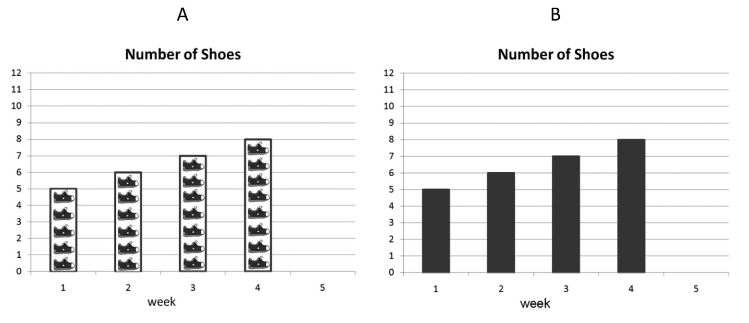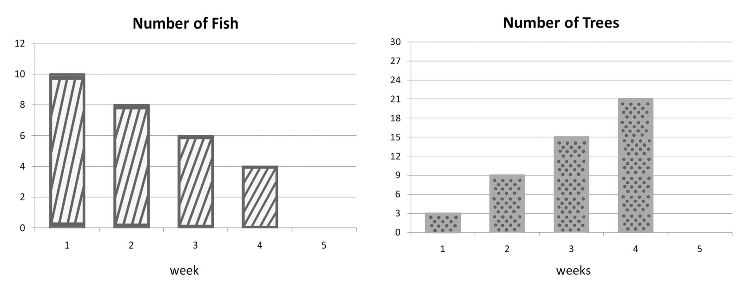The researchers examined early elementary materials meant to teach kids how to read graphs. They were specifically interested in comparing boring, monochromatic, abstract, bar graphs versus colorful, fun graphs that use a graphic. (Please excuse the black & white reproduction.)
kaminski & Sloutsky found that some children shown the graph with embedded objects adopted a counting strategy to read a graph, even if they were taught to focus on the bar height and the axis. The authors surmise that the counting routine is so well-learned that when the child is presented with the vivid graphic with salient objects to count, it's simply very easy to go down that mental path. And of course the child does read the graph correctly.
The problem is not just the child hasn't learned a good strategy to read the graph, or is distracted--the child has learned a bad strategy. So when kids who adopted the counting strategy see graphs like this . . .
The effect fades as kids get older--first graders are better than kindergarteners in ignoring extraneous information when reading graphs.
On the one hand you could see this as small potatoes--kids will get over it, they will learn how to read graphs. But on the other hand, why knowingly put a stumbling block in front of kids trying to learn math? And more important, how many other small stumbling blocks are there that we don't know about?


 RSS Feed
RSS Feed